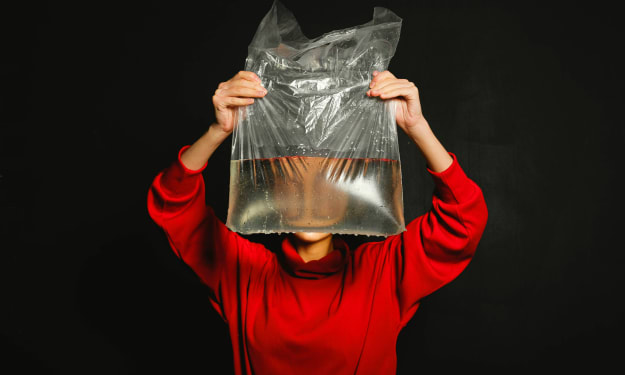Dangers of Nighttime Microdosing
Exploring the Potential Drawbacks of Nocturnal Microdosing with Psychedelics

In recent times, the concept of microdosing has captured widespread attention due to its perceived capacity for self-enhancement, creative augmentation, and overall well-being improvement. This technique involves the ingestion of minute quantities of psychedelics, such as psilocybin mushrooms, with the intent of eliciting subtle effects devoid of full-fledged hallucinations. While the ramifications of microdosing during the daytime have undergone comprehensive discourse, mounting apprehensions surround its after-dark implementation. This investigation seeks to elucidate the rationale behind the reservations towards nocturnal microdosing, elucidating the plausible adverse repercussions on both the quality of sleep and psychological equilibrium.
A Comprehensive Insight into Psilocybin Mushrooms
With historical roots spanning diverse cultures, psilocybin mushrooms, colloquially referred to as "magic mushrooms" or "shrooms," have been historically revered for their hallucinogenic attributes. These mushrooms house psilocybin, a compound that the body metabolizes into psilocin. Post-ingestion, psilocin interacts with serotonin receptors within the cerebral framework, ushering in modifications in mood, cognitive faculties, and sensory perception. The effects of psilocybin mushrooms exhibit multifaceted diversity, contingent upon a medley of variables encompassing dosage, individual sensitivity, environment, and more. Noteworthy reports from users include amplified self-awareness, heightened sensory encounters, and an augmented sense of unity with their surroundings.
Parallel to their potential therapeutic merit, encompassing the management of addiction, anxiety, and depression, psilocybin mushrooms harbor their fair share of risks. The disparity in potency and composition across assorted mushroom strains exacerbates the challenge of accurate dosing and prediction of outcomes. The temporal and intensity oscillations characteristic of a mushroom-induced episode introduce a dimension of unpredictability, potentially triggering sentiments of unease, disorientation, or even paranoia.
Unpacking the Hazards Associated with Nocturnal Microdosing
The allure of microdosing with shrooms in the nocturnal hours may appeal to individuals seeking solace or amplified introspection. However, it remains paramount to confront the gamut of risks and plausible detriments, even at nominal dosages.
Opting for microdosing at night poses a notable jeopardy to the sanctity of sleep quality. The seemingly infinitesimal quantities of psilocybin wield the capacity to disrupt the delicate equilibrium prerequisite for restorative sleep, notwithstanding their comparably subdued effects relative to elevated doses. The intricate interplay between psychedelics and serotonin levels, coupled with alterations in cerebral activity, can potentially culminate in heightened wakefulness, vivid dream sequences, or even the onslaught of nightmares. These consequences wield the capability to disarray customary sleep cycles, thereby depriving individuals of the indispensable deep slumber that underpins both physiological revitalization and cognitive rejuvenation.
Furthermore, the psychotropic reverberations of shrooms, encompassing intensified introspection and augmented sensory acuity, could be invoked. While these effects might be met with favor within the ambit of diurnal microdosing, their propensity to escalate after sunset introduces a distinctive dichotomy. The prospect of heightened emotional states or intensified anxiety could cast a pall over the relaxation process and preclude a seamless segue into bedtime tranquility. The departure from the norm in sensory perception, accompanied by a heightened susceptibility to stimuli, presents an impediment to the innate transition into the realms of slumber, posing a formidable challenge to the pursuit of serenity and a predisposition for sleep.
Analyzing the Addiction Potential of Shrooms
Empirical investigations point to the absence of physiological addiction or compulsive drug-seeking tendencies within the trajectory of psilocybin mushroom usage. However, a distinction must be made—any substance, be it psilocybin mushrooms or any other, bears the latent potential to incubate psychological dependence or substance abuse tendencies. The allure of the psychedelic experience might beckon individuals, spawning a proclivity to employ it as a coping mechanism, thereby birthing the terrain of psychological reliance. This recurrent and inordinate utilization may culminate in a state of dependence, compelling the individual to tether themselves to mushrooms irrespective of their deleterious impact on personal well-being.
While the susceptibility of psilocybin mushrooms to fostering addiction might not rival that of certain other substances, they still manifest as a conduit to more nefarious forms of substance abuse. In instances of this nature, specialized addiction treatment programs, exemplified by institutions such as Banyan drug rehab center, emerge as indispensable. These regimens encompass a kaleidoscope of therapeutic modalities engineered to empower individuals in the conquest of their substance use disorders.
The siren call of nocturnal microdosing with psychedelics, notably psilocybin mushrooms, mandates discernment of the highest order. As these substances unveil captivating avenues for self-evolution and therapeutic resonance, the attendant perils tethered to nighttime microdosing necessitate recognition. The disarray of sleep patterns, plausible emotional discord, and the transmutation of sensory perception together constrict the reparative potential entwined with serene slumber. Ergo, individuals traversing the realm of psychedelic application must meticulously deliberate the prospective benefits in tandem with the formidable drawbacks. For those grappling with the ensnarement of substance use disorders, the compass points unwaveringly toward the compass of accredited addiction treatment facilities, where reclamation assumes the garb of possibility.





Comments
Cindy Jones is not accepting comments at the moment
Want to show your support? Send them a one-off tip.